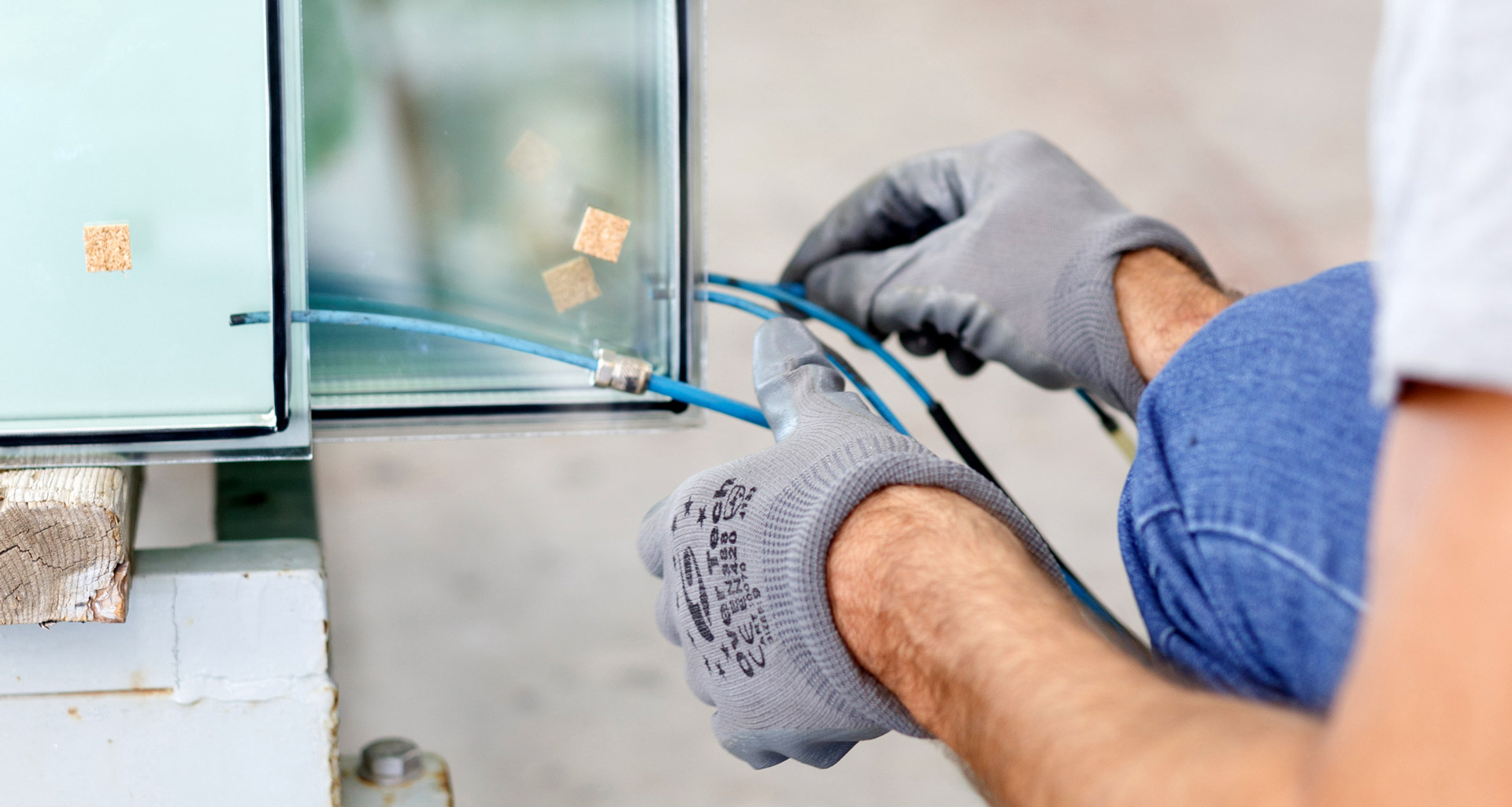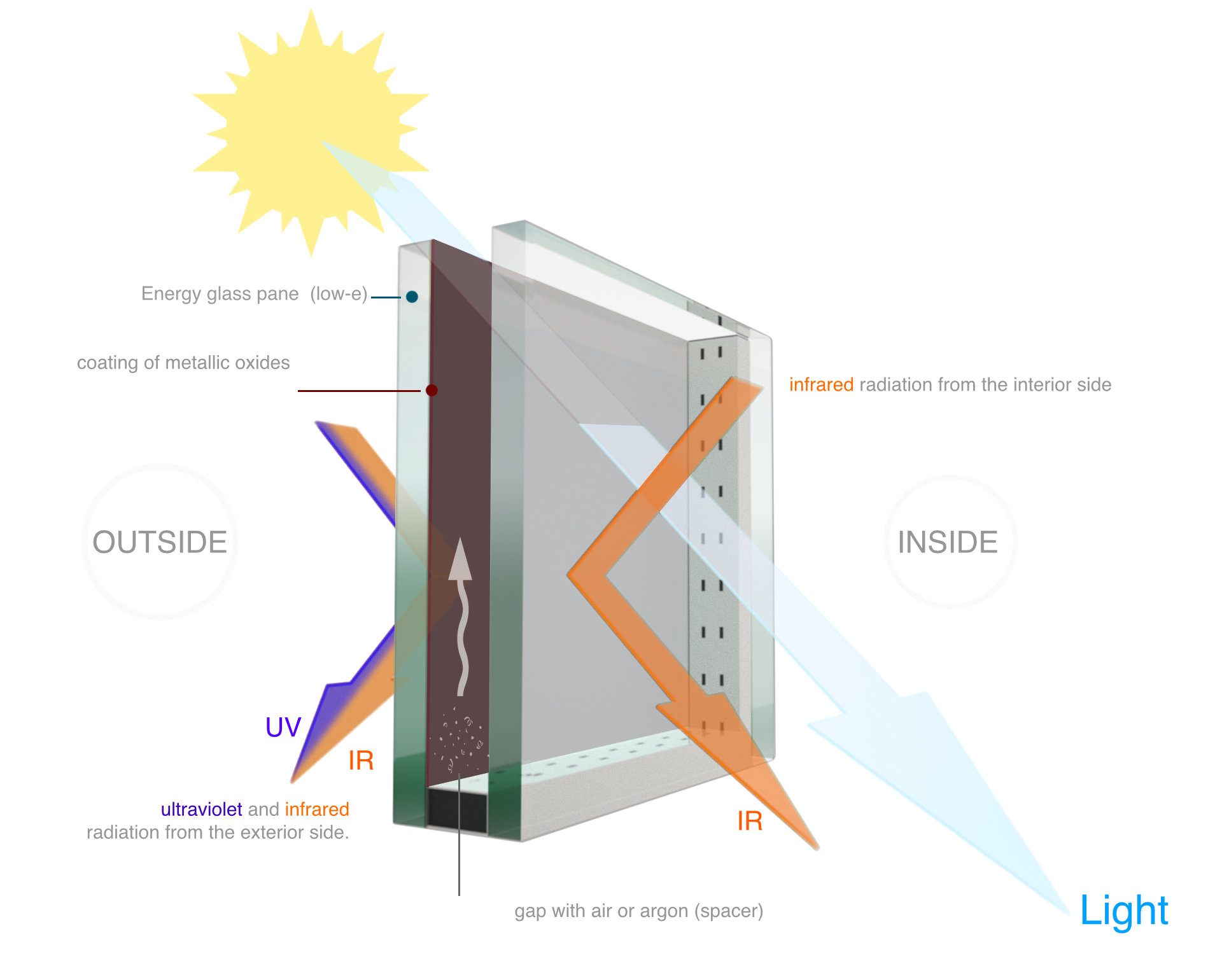ENERGY GLASS
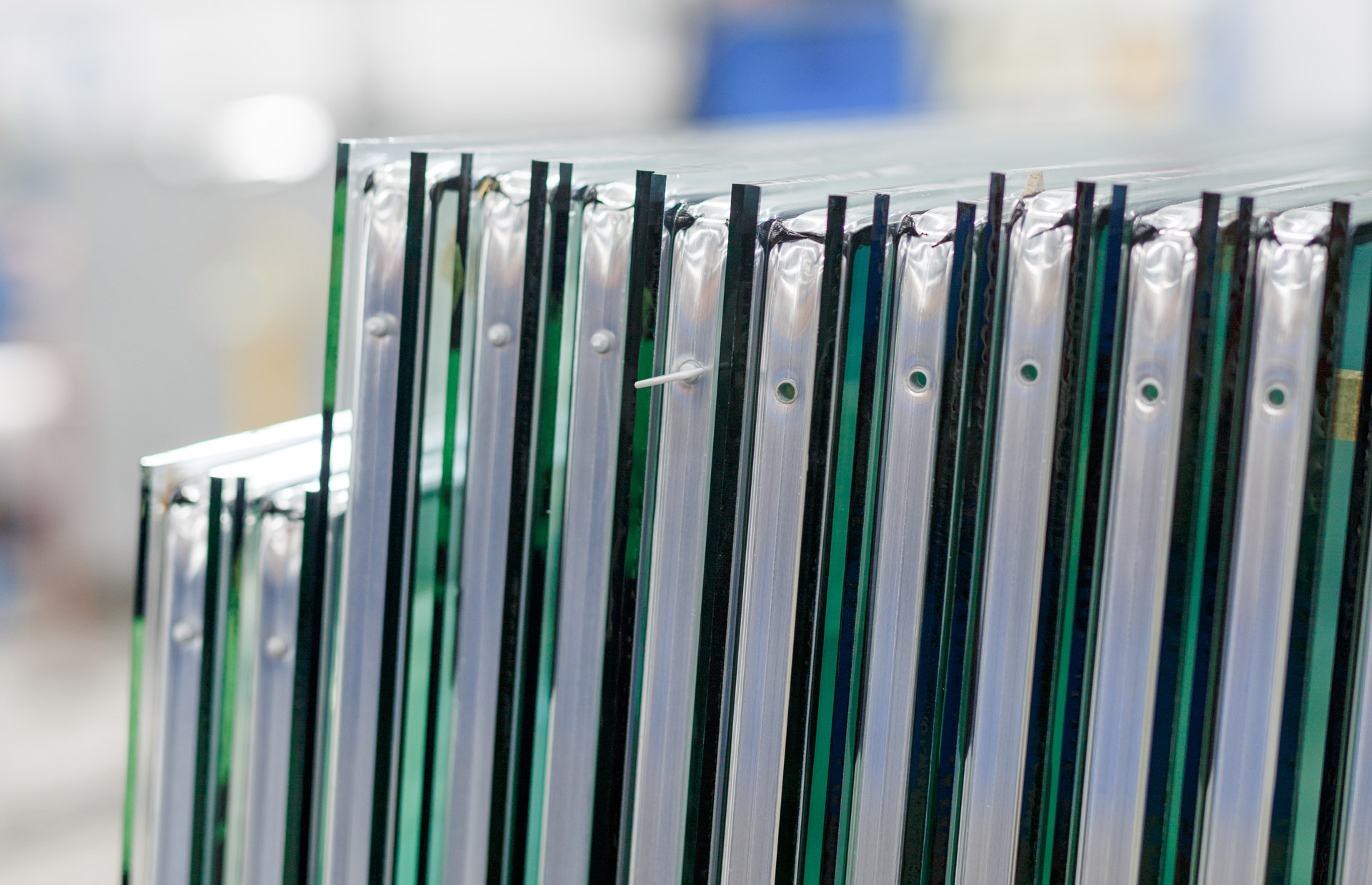
Energy glass in the summer
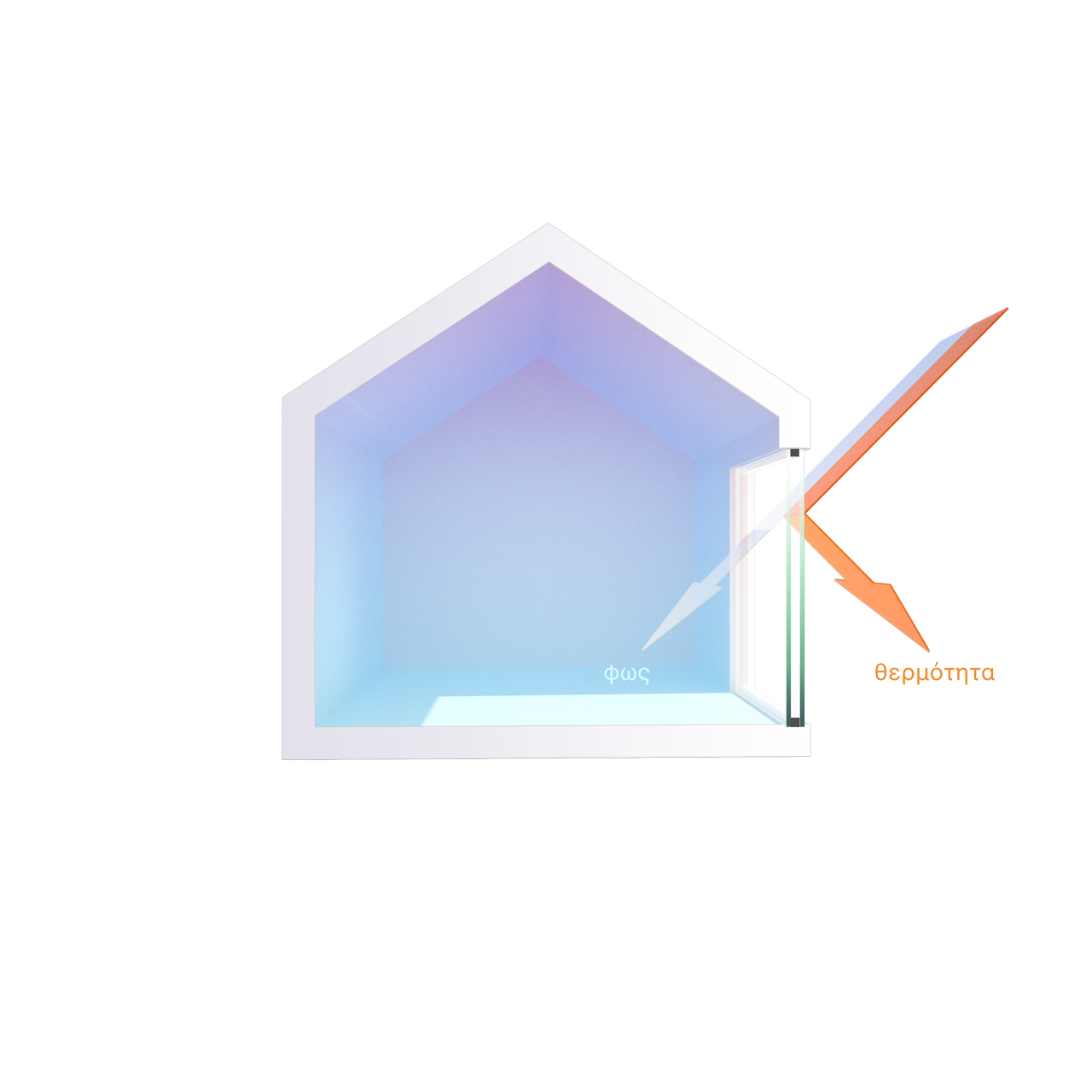
Energy glass has the attribute of reflecting the infrared sunlight (heat) and allows the visible light (brightness) to pass. When sunlight strikes an object (pavement, loop, balcony, pot, etc.), it heats up and emits indirect heat, which is trying to enter our space. Energy glass acts as a shield in this kind of heat and does not allow it to pass through our inner space. This helps us to keep our home or workspace cooler in the summer, as the heat does not pass inside so that our space is cool. In this way, we have reduced cooling costs.
Energy glass in the winter
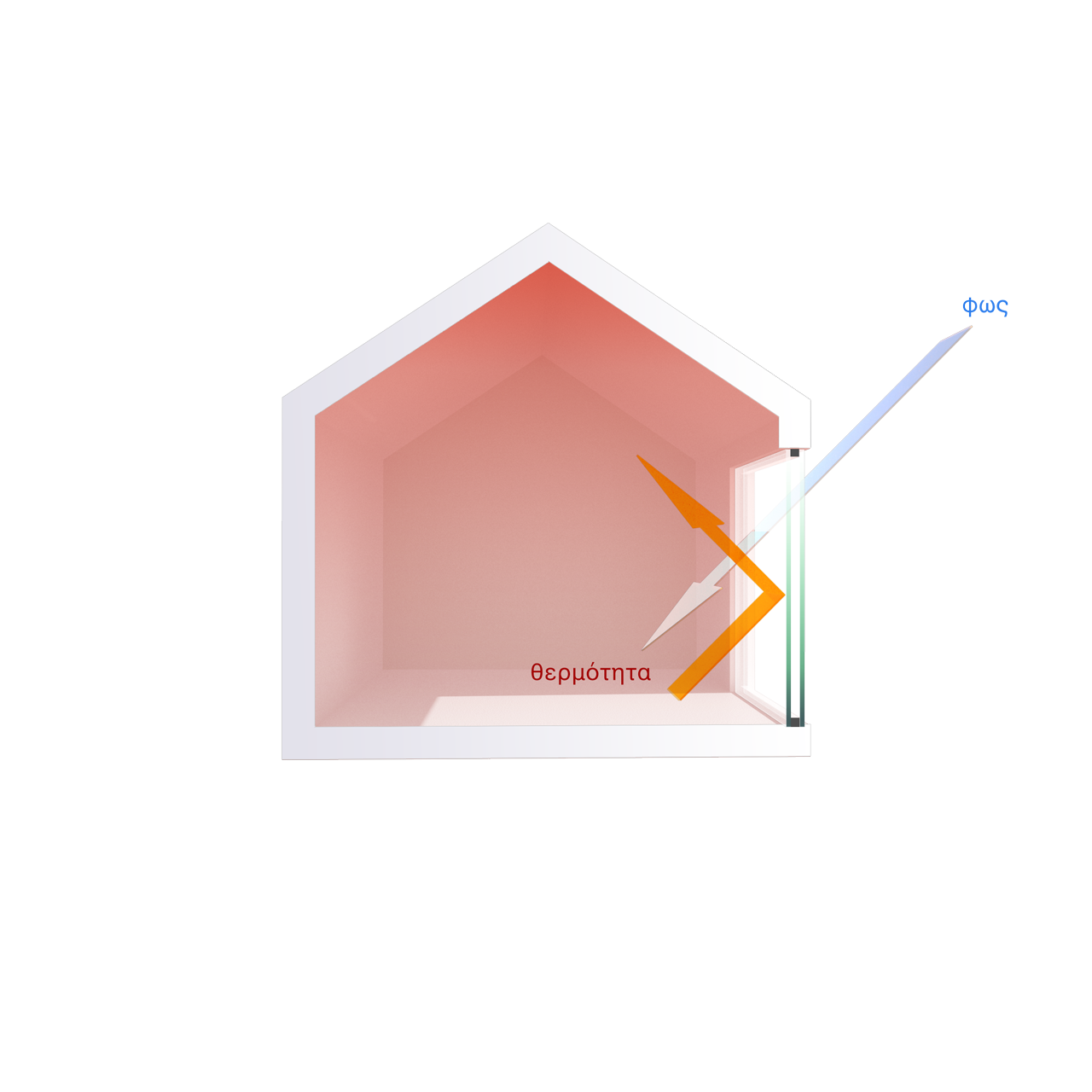
Energy glass maximizes the beneficial properties of the sun. Energy from sunlight is absorbed by objects inside the space, such as sofas or carpets, and is essentially transformed into heat. However, the energy glass acts as a shield in this heat and does not allow it to escape from the windows. Let’s not forget that the heat in the interior always moves to the cooler points (cooler windows). Energy glass acts like a mirror and reflects the heat back into our space, keeping it warm. As a result, we have reduced heating costs.
In fact, soft coatings do not only reduce the amount of heat transferred from outside to inside and the opposite, but they also filter out solar radiation. At the same time, they greatly impede the permeability of radiation that wears down carpets, curtains, furniture etc up to 70%.
All the above, are identified and determined by three important indicators, which are analyzed as follows:
U-value or K-value W/mK:
thermal transmittance expresses the rate of heat loss per square meter of glazing between the inner and outer surfaces of the pane and is determined by the ability of a surface to absorb or reflect heat. The lower the transmittance, the lower the “K” thermal transmittance, and thus the more energy efficient the glass is.
Solar Factor (g):
solar factor is one of the most important factors and expresses the percentage of total solar energy passing through the glass inside the space. Its values range from 0-1. Because in Greece we have warm summers it is very important to minimize this value, otherwise, the interior space is overheated, increasing the cost of cooling.
Light Transmission (LT):
Light Transmission (LT): optical permeability, expressing the percentage of light that passes through the glass. As the index grows, the more light passes inside the room. A low light transmittance impedes consumption in the artificial lighting system.
